We were pleased to host Prof. Kristopher Kilian from UNSW Sydney for our September webinar, where he presented on:
Inspired by Nature: Biomaterials Design for Therapeutic Cell Production and Delivery
Presentation Highlights
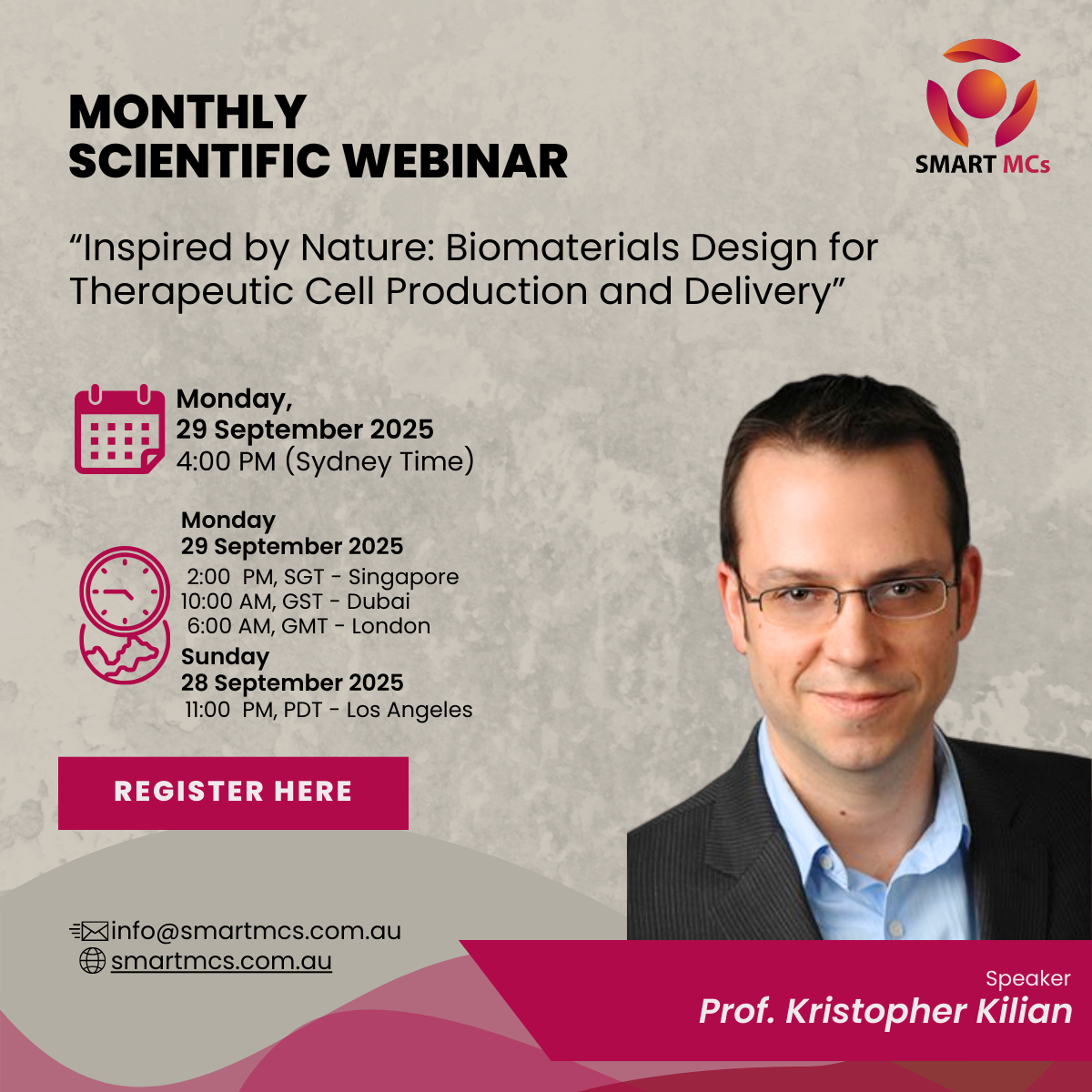
-
Supramolecular, self-healing hydrogels: Prof. Kilian presented Trpzip hydrogels with tuneable mechanics, low yield point, shear-thinning, and self-healing behaviour, along with stress relaxation similar to natural matrices like Matrigel.
-
Organoid polarity control: Intestinal organoids grown in Trpzip showed apical-out polarity. Addition of laminin restored basal-out polarity, demonstrating tunable morphologies.
-
Stem cell applications: Trpzip supported long-term pluripotency in iPSC cultures and, when functionalised with adhesion peptides, directed lineage specification toward ectoderm, mesoderm, or endoderm.
-
Composite and blended hydrogels: Combining Trpzip with PEG improved stiffness and toughness, while electrostatic blending with alginate or gelan gum enabled faster gelation and better handling.
-
Cell delivery and therapeutic potential: Trpzip matrices supported iPSC-derived MSCs and enabled controlled extracellular vesicle release, suggesting potential use as wound-healing dressings.
-
3D biofabrication: Trpzip functioned as a yield-stress printing bath and was demonstrated in suspension bioprinting and high-throughput droplet systems.
-
Microphysiological systems: Microcapsules incorporating Trpzip enabled control of oxygen gradients within culture wells, useful for disease modelling and organ-on-chip applications.
-
Antimicrobial activity: The tryptophan-rich motif exhibited resistance to both Gram-positive and Gram-negative bacteria, expanding potential biomedical uses.
Research Applications
- Custom hydrogels for long-term pluripotent stem cell culture
- Defined materials for directing lineage-specific differentiation
- Organoid culture systems with tunable polarity
- Suspension printing and 3D biofabrication using yield-stress matrices
- Hydrogel blends for wound healing and controlled extracellular vesicle release
- Microcapsule systems for oxygen gradient control in culture
- Antimicrobial biomaterials for regenerative medicine
Key Q&A Insights
- Hot topics in biomaterials: Prof. Kilian emphasised the pressing need for synthetic alternatives to natural matrices due to regulatory shifts and the demand for more defined, GMP-friendly materials.
- Commercialisation challenges: Regulatory hurdles for implantable biomaterials are significant; using clinically approved polymers may speed translation, but advanced synthetics like Trpzip will be essential for future therapies.
- Immunogenicity: Early blood studies show no concerning inflammatory responses with Trpzip. In vivo work is planned in collaboration with a burns unit in Sydney, using a pig model to evaluate Trpzip behaviour and integration.
- Career advice: Prof. Kilian encouraged students to read widely, trust creative instincts, and collaborate across disciplines. He stressed that a PhD is not essential for impact in biotechnology—bachelor’s and master’s level training also opens valuable industry pathways.
Full Abstract
Most hydrogels used in biomedical applications display a homogeneous, static architecture. In contrast, natural hydrogels in tissue are highly dynamic, constantly remodelling in chemistry, architecture, and mechanical properties. In this presentation, Prof. Kilian demonstrated how materials chemistry can be used to fabricate dynamic hydrogels that mimic natural signalling.
First, he showed how supramolecular assembly can be used to create hierarchically structured hydrogels with tuneable mechanics and self-healing behaviour. Next, he demonstrated how modifying the biochemical and biophysical attributes can promote desirable activities in stem cells, towards next-gen support matrices for cell production. Finally, the potential of using these soft materials as cell delivery vehicles was presented, with examples of tailored release through integrating complementary assembly motifs.
Together, these examples demonstrate how the principles of self-assembly and biorecognition serve as powerful drivers in biomaterials design for biotechnology and biomedical applications.
About the Speaker
Professor Kristopher Kilian is Co-Director of the Australian Centre for NanoMedicine and Theme Lead of the Biomedical & Health Theme at UNSW Sydney. His research focuses on the design and development of dynamic biomaterials for cell and tissue engineering, with an emphasis on mimicking the extracellular environment.
Prof. Kilian’s career includes appointments at the University of Illinois at Urbana-Champaign, the University of Chicago, and UNSW Sydney. His work has been recognised with numerous honours, including the ARC Future Fellowship, the NSF CAREER Award, and recognition as a Eureka Prize finalist.
To learn more about his research, visit the Kilian Lab website.
Missed the Live Session?
If you missed the live session or would like to revisit the discussion, the full recording is now available.
Watch the webinar recording below or on YouTube.
Interested in Hydrogels?
We offer a range of hydrogels designed for 3D cell culture, biofabrication, and tissue engineering.
For enquiries, visit our Product Page or contact us at info@smartmcs.com.au to learn more!
Thank you for joining the Smart MCs Webinar Series, where we share insights into tools and technologies shaping bioprocessing, cell biology, and biomedical research.

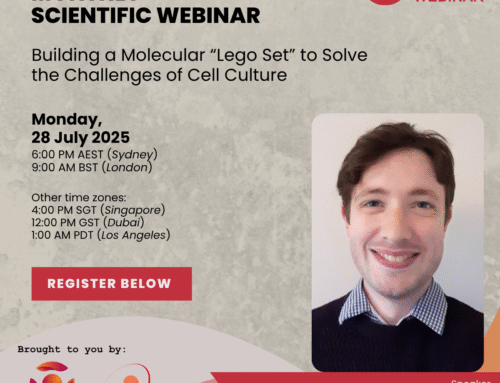
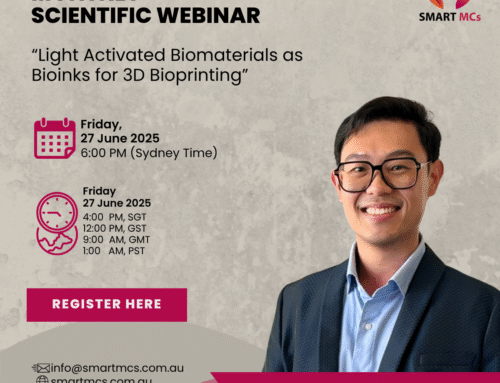
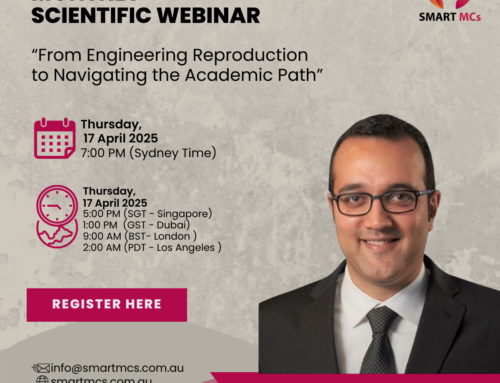
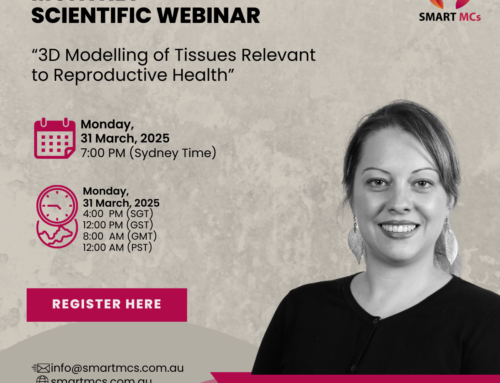
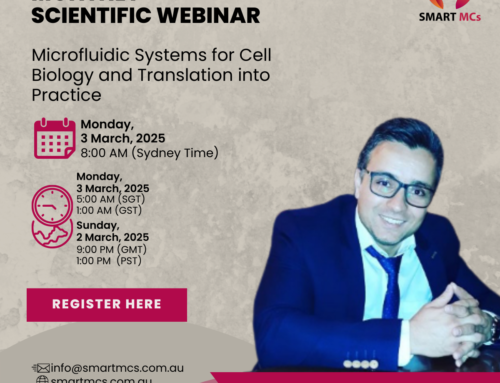
Leave A Comment